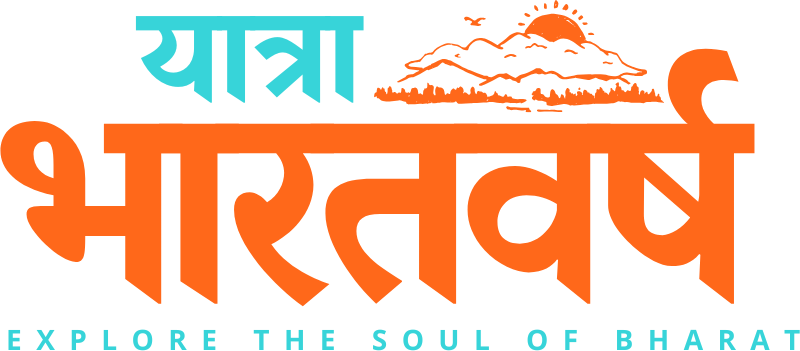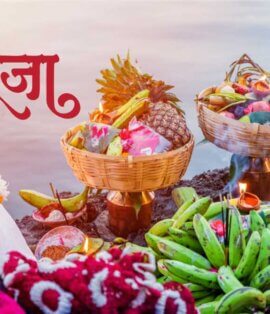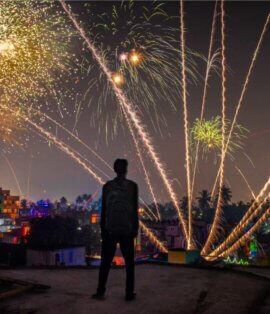1. Brief overview of Shravan month
The Shravan month holds immense significance in Hinduism, particularly as a time dedicated to Lord Shiva. Falling during the monsoon season, this month brings a sense of spiritual purification and renewal. In India, Shravan is celebrated with profound devotion, fasting, and pilgrimages. Throughout the month, various religious practices unite millions of people, each region adding its unique customs, rituals, and celebrations. In addition to worshiping Lord Shiva, Shravan is a time for reflecting on divine forces, seeking blessings for health, prosperity, and spiritual well-being.
2. Calendar Systems and Timing
The dates of Shravan vary depending on the type of Hindu calendar followed in each region. India predominantly follows two systems: the Purnimanta calendar, where the month begins after the full moon, and the Amanta calendar, where it begins after the new moon.
- In the Purnimanta system, Shravan spans from the full moon day of Ashadh to the full moon day of Shravan.
- In the Amanta system, Shravan starts after the new moon of Ashadh and ends on the new moon of Shravan.
In 2025, Shravan will be observed on these dates across India:
- North India: July 11 – August 9
- South & West India: July 25 – August 23
3. What Shravan is Called in Different States
While Shravan is commonly known by this name across most parts of India, each region has its own unique term for the month, reflecting its cultural diversity. Here’s a breakdown of how Shravan is called in different regions:
| Region | Name |
|---|---|
| Uttar Pradesh, Bihar, Punjab | Sawan |
| Maharashtra, Gujarat, Madhya Pradesh | Shravan Maas |
| Karnataka | Shravana Maasa |
| Tamil Nadu | Avani |
| Kerala | Chingam |
| West Bengal, Assam | Shrabon |
| Andhra Pradesh, Telangana | Shravana Masam |
| Odisha | Shravana Masa |
4. Key Rituals and Observances
Across India, Shravan is primarily observed as a time to honor Lord Shiva, and many religious practices are followed, including:
- Sawan Somvar (Monday Fasts): One of the most widely observed rituals during Shravan is the fast on Mondays, or Sawan Somvar, dedicated to Lord Shiva. Women, particularly those looking for a good marriage or seeking blessings for their families, fast throughout the month, offering prayers and devotion to the deity.
- Kanwar Yatra: Particularly prominent in North India, the Kanwar Yatra is a pilgrimage undertaken by devotees to sacred rivers, like the Ganges. Devotees carry water from the river in Kanwars (poles) and offer it to Lord Shiva in temples.
- Shravan Fasting: Many devotees, especially women and unmarried girls, fast during the entire month of Shravan, dedicating themselves to Lord Shiva. The fasts include abstinence from food, water, or specific food items like grains and salt, in accordance with personal or community customs.
- Offering Bilva Leaves: The Bilva leaf, also known as the Bael leaf, is offered to Lord Shiva during prayers. These leaves are considered sacred and are believed to have purifying qualities.
- Temple Visits: Devotees throng to temples, particularly Shiva temples, throughout the month, performing rituals and prayers to seek blessings from Lord Shiva.
5. Festivals Celebrated During Shravan
Several important festivals fall during the Shravan month, further enhancing its spiritual and cultural significance. These include:
- Nag Panchami: Celebrated on the fifth day of the Shukla Paksha of Shravan, Nag Panchami is dedicated to the worship of serpents. Devotees pray for protection from venomous creatures and the well-being of their families.
- Hariyali Teej: This is observed mainly in North India. It is a festival dedicated to Lord Shiva and Goddess Parvati, where women fast and pray for marital bliss and the well-being of their husbands.
- Raksha Bandhan: This widely celebrated festival marks the bond between brothers and sisters. It falls during the Shravan month, where sisters tie a rakhi (sacred thread) around their brothers’ wrists, praying for their long life and prosperity.
- Janmashtami: The birth of Lord Krishna is celebrated across India, and in some regions, it overlaps with Shravan. Devotees engage in prayers, fasting, and dance performances to honor Krishna.
- Local Temple Fairs and Folk Celebrations: Many localities organize temple fairs during Shravan, where devotees come together to participate in prayers, music, dances, and other folk traditions. These fairs are especially vibrant in rural areas.
6. Regional Highlights
Different regions of India celebrate Shravan in unique ways, incorporating local customs, deities, and festivities into the observances. Let’s take a detailed look at how Shravan is celebrated across India:
- North India: In Uttar Pradesh, Bihar, and Punjab, the month of Sawan is marked by intense devotion to Lord Shiva. Devotees observe Sawan Somvar, visiting temples like the famous Kashi Vishwanath Temple and Vaishno Devi Temple. The Kanwar Yatra is the highlight, where millions of pilgrims carry holy water from the Ganges to offer it to Lord Shiva.
- Gujarat and Maharashtra: In these regions, Shravan is marked by various vows and fasts, such as Jaya Parvati Vrat and Mangala Gauri Vrat. Women, particularly married ones, fast to pray for the long life and health of their husbands. Temples are adorned with flowers, and special prayers are recited for Lord Shiva and Goddess Parvati.
- South India: In Karnataka, Tamil Nadu, and Andhra Pradesh, the month of Shravana is dedicated to the worship of both Lord Shiva and Lord Vishnu. The Varalakshmi Vratam in Karnataka and Tamil Nadu is a popular ritual, where women worship Goddess Lakshmi for wealth and prosperity. The Avani Avittam in Tamil Nadu is another important observance, a sacred thread ceremony, where men change their yajnopavita (sacred thread).
- Odisha and Bengal: In Odisha, the Bol Bom Yatra is an important pilgrimage during Shravan, where devotees carry water from sacred rivers to Shiva temples. In West Bengal and Assam, Shrabon sees extensive worship of Lord Shiva, with rituals focused on fertility and rain.
- Kerala: In Kerala, Chingam is the beginning of the Malayali New Year, and Shravan also coincides with the Onam festival preparations. The focus here is on spiritual cleanliness and preparing for the upcoming harvest season.
7. Spiritual Significance and Beliefs
Shravan is believed to hold immense spiritual significance, particularly in connection with Lord Shiva, the deity of transformation and regeneration. The month is considered a time to purify the soul, seek blessings, and cultivate inner peace. Devotees believe that worshipping Lord Shiva during this month can remove obstacles, grant prosperity, and provide protection against calamities.
The monsoon season, which coincides with Shravan, symbolizes fertility and the renewal of life. As rain nourishes the earth, Shravan is a time for personal renewal and spiritual growth. For many devotees, the act of fasting, pilgrimage, and prayer during Shravan brings them closer to the divine and creates a bond of unity among people from different regions.
8. Conclusion
Shravan is a month that unites diverse cultures and traditions across India under the common theme of devotion to Lord Shiva. While each region brings its own unique flavor to the celebrations, the core themes of worship, fasting, and spiritual discipline remain universal. The rituals observed, from Sawan Somvar to Kanwar Yatra, demonstrate the deep devotion that spans generations, transcending regional differences. Whether through pilgrimages, festivals, or family prayers, Shravan is a time for spiritual reflection, community bonding, and honoring Lord Shiva’s blessings. It serves as a reminder of the rich cultural and spiritual heritage that binds India together, making it a deeply revered month for millions.
Frequently Asked Questions: How Shravan is Celebrated Across Indian States
1. Uttar Pradesh, Bihar, Punjab (Sawan)
In Uttar Pradesh and Bihar, Sawan is a month of great religious significance, primarily dedicated to Lord Shiva. Devotees believe that worshipping Lord Shiva during this month will bring them peace, health, and prosperity. The month is marked by intense devotion, fasting, and pilgrimages, with many people walking barefoot to temples and sacred spots dedicated to Lord Shiva.
In Punjab, Sawan is observed with a combination of fasting, devotion, and communal prayers. The Kanwar Yatra is a central ritual where pilgrims walk long distances to collect holy water from the Ganges and offer it to Lord Shiva. The tradition of fasting on Mondays (Sawan Somvar) is also widely practiced by women, seeking blessings for marital happiness and family well-being.
The Kanwar Yatra is one of the most significant events during Sawan in Uttar Pradesh. Devotees travel from nearby villages to collect holy Ganga water, which is then carried in kanwars (poles) to be offered to Lord Shiva. This pilgrimage is considered a way to purify the mind and soul.
In Bihar, devotees particularly observe the Sawan Somvar fast, dedicated to Lord Shiva. Women, especially, fast from dawn to dusk, often without food or water, offering prayers and chanting mantras. It is believed that these fasts help remove obstacles in life and bring blessings of health and prosperity.
During Sawan, some of the most visited temples in Punjab include the Mata Vaishno Devi Temple and the Chhinnamastika Temple, where devotees perform rituals and offer prayers to Lord Shiva and Goddess Parvati.
2. Maharashtra, Gujarat, Madhya Pradesh (Shravan Maas)
In Maharashtra and Gujarat, Shravan Maas holds religious importance for its association with Lord Shiva. The month is dedicated to spiritual growth and rejuvenation through fasting, praying, and performing rituals. Lord Shiva is honored, and fasting on Mondays (Sawan Somvar) is observed by women, especially for family welfare.
In Madhya Pradesh, Shravan is marked by Sawan Somvar fasts, where devotees offer water, flowers, and fruits to Lord Shiva. Pilgrims visit temples and attend religious gatherings, chanting the Mahamrityunjaya mantra to seek divine blessings. The fast is also believed to ensure the well-being of their families and is a time for spiritual renewal.
In Gujarat, the Mangala Gauri Vrat is a key ritual observed during Shravan. Married women fast to pray for the well-being of their husbands and seek blessings for marital bliss. Women also participate in Jaya Parvati Vrat for prosperity, health, and peace in the family.
In Maharashtra, the Mangala Gauri Vrat is a widely observed ritual during Shravan. It involves fasting, prayer, and the wearing of special clothes by women. The worship focuses on Gauri Ma, the manifestation of Goddess Parvati, with the belief that the observance will bring peace and prosperity to their homes.
In Gujarat, Shravan Maas is a time for intense worship of Lord Shiva, as it is believed that this month holds the power to fulfill wishes. The month is seen as an auspicious time to cleanse oneself spiritually, and offerings are made to Lord Shiva, such as milk, water, and Bilva leaves.
3. Karnataka (Shravana Maasa)
Shravana Maasa in Karnataka is a time for spiritual reflection, devotion, and fasting. It is considered the most auspicious month for worshiping Lord Shiva and is marked by special prayers, especially on Mondays. The Shravana Maasa is dedicated to Lord Shiva’s worship for purification and blessings.
The Avani Avittam ceremony is significant during Shravan in Karnataka. This sacred thread ceremony is celebrated by Brahmin men, who change their yajnopavita (sacred thread) after performing prayers. The ritual is associated with spiritual renewal and a fresh start in life.
Devotees in Karnataka follow rituals such as fasting on Mondays (Sawan Somvar), visiting temples, and offering Bilva leaves to Lord Shiva. The prayers and fasts are considered a way to purify the soul and seek divine blessings for prosperity, health, and spiritual growth.
While Lord Shiva is the main deity worshipped in Shravana Maasa, many regions in Karnataka also observe rituals in honor of Lord Vishnu during this time, especially the Varalakshmi Vratam. This emphasizes the harmonious worship of both deities, ensuring the well-being and prosperity of the devotees.
In Karnataka, fasting during Shravan is done primarily on Mondays, where devotees refrain from eating grains and other specific foods, adhering to strict fasting rules. The fast is meant to purify the body and soul, and is believed to bring blessings from Lord Shiva.
4. Tamil Nadu (Avani)
In Tamil Nadu, Avani marks a time for intense worship of Lord Shiva. This month also sees the celebration of various festivals such as Varalakshmi Vratam and Avani Avittam. It is a time for spiritual cleansing, devotion, and prayer.
The Varalakshmi Vratam in Tamil Nadu is a festival dedicated to Goddess Lakshmi, the deity of wealth and prosperity. Women fast, pray, and perform rituals to seek blessings for their families. It is believed that the observance brings wealth, good fortune, and happiness to the household.
In Tamil Nadu, Avani is observed by fasting, temple visits, and special prayers. Women participate in Varalakshmi Vratam, while men observe Avani Avittam. The celebrations are marked by festive events at temples and community gatherings.
Avani Avittam is an important ritual for Brahmin men in Tamil Nadu, where they change their sacred thread and perform rituals. This act symbolizes renewal and spiritual growth, and it holds immense significance during the Shravan month.
Devotees in Tamil Nadu honor Lord Shiva with rituals such as offering Bilva leaves and chanting Mahamrityunjaya Mantra. Special prayers are offered at temples dedicated to Lord Shiva throughout the month of Avani.
5. Kerala (Chingam)
In Kerala, Chingam marks the Malayali New Year and coincides with the Shravan month. It is a time for spiritual reflection, prayers, and fasting. Lord Shiva is worshipped, especially in the form of the Shiva Lingam, and there are various temple festivals during this month.
During Chingam, devotees observe fasting, visit temples, and perform rituals dedicated to Lord Shiva. The focus is on self-purification and devotion, and offerings such as Bilva leaves are common. There are also local festivals and community prayers during this period.
Chingam is the start of the Malayali New Year, and it often overlaps with preparations for the Onam festival. While Onam celebrates the harvest season, Chingam and Shravan are more focused on spiritual renewal and devotion, particularly to Lord Shiva.
Devotees in Kerala honor Lord Shiva through temple visits, chanting mantras, and fasting. Rituals focus on spiritual growth and purification, with many pilgrims visiting famous temples like the Sabarimala temple.
In Kerala, Chingam marks the beginning of the new year and is seen as a time for new beginnings. The month of Shravan overlaps with this period, and it holds both cultural and spiritual significance, with an emphasis on purifying the soul and celebrating new opportunities.
6. West Bengal and Assam (Shrabon)
In West Bengal and Assam, Shrabon is a time for intense devotion to Lord Shiva. People worship Lord Shiva with rituals, offer Bilva leaves, and seek blessings for prosperity, health, and success. The month is considered one of purification and spiritual renewal.
In West Bengal and Assam, Shrabon is observed by visiting temples, performing Shiva worship, and fasting. Devotees observe Sawan Somvar and take part in local festivals that honor Lord Shiva. Pilgrimages to sacred temples dedicated to Lord Shiva are also common.
In Assam, Shrabon rituals are centered around visiting Shiva temples, chanting mantras, and performing prayers. Many devotees also participate in the Bol Bom Yatra, a pilgrimage where they carry holy water from rivers to Shiva temples.
In West Bengal, Shrabon is a month of deep devotion to Lord Shiva. Devotees visit temples, offer Bilva leaves, and chant Shiva mantras. The region is also known for its cultural celebrations and temple fairs during this period.
In Bengal and Assam, Shrabon is unique because it combines spiritual observance with cultural festivals, such as Durga Puja preparations, while also being deeply focused on Shiva worship and purification. The religious observances are intertwined with regional rituals, creating a unique fusion of devotion and culture.
